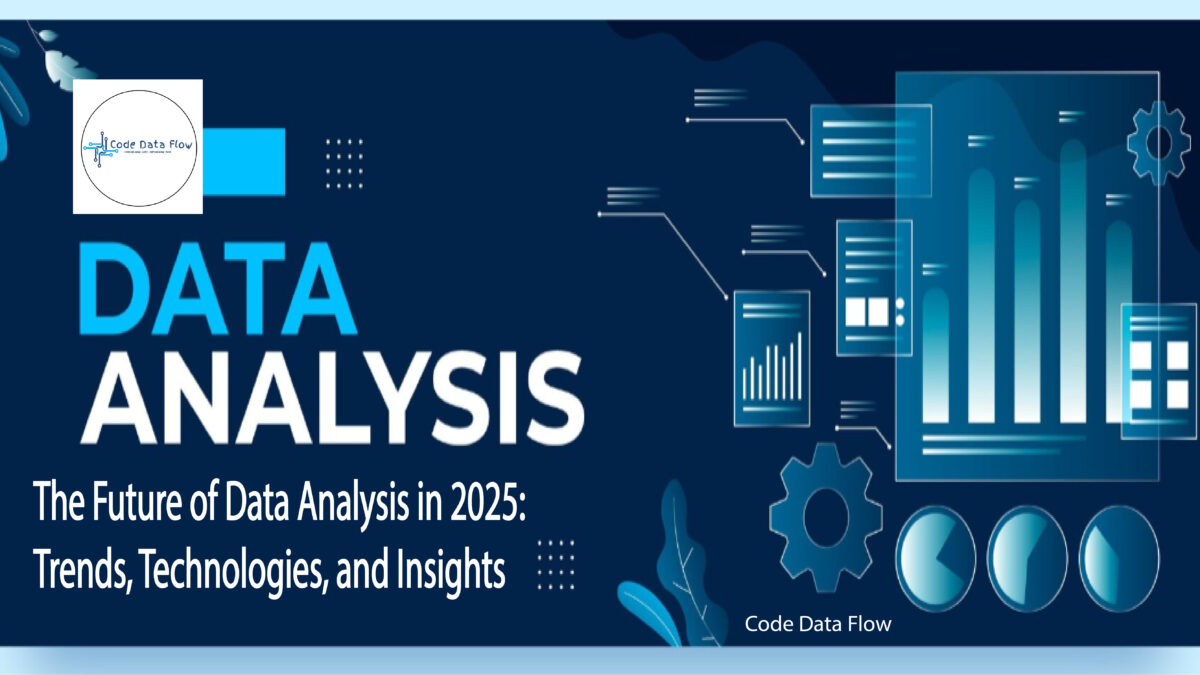
The Future of Data Analysis in 2025: Trends, Technologies, and Insights
This Blog “The Future of Data Analysis in 2025: Trends, Technologies, and Insights” Highlights the Future of Data Analysis.
In 2025, data analysis will be more important than ever. Businesses and researchers are using data analytics to make better decisions, streamline procedures, and obtain a competitive edge as a result of the quick development of artificial intelligence (AI), machine learning (ML), and big data technology. This blog examines current trends, new developments in technology, and the state of data analysis in the future.
1. The Rise of AI-Driven Data Analysis
By automating intricate procedures, revealing hidden patterns, and producing forecasts with previously unheard-of precision, artificial intelligence is completely changing the way data is analysed. By 2025, companies will be able to do the following thanks to AI-powered analytics tools that lessen the need for human intervention:
- Detect fraud in real time
- Predict customer behavior
- Automate decision-making in finance, healthcare, and retail
- Improve recommendation systems in e-commerce
2. Real-Time Analytics: The Need for Speed
Batch processing is no longer an option; real-time data analytics is now essential. Instant insights are necessary for industries like stock trading, cybersecurity, and IoT-driven manufacturing to respond quickly to developments. To increase operational efficiency, businesses are spending money on in-memory computing, event-driven architectures, and real-time data pipelines.
3. Edge Computing and Decentralized Data Processing
Cloud computing is changing into edge computing, where data is processed closer to the source, as a result of the proliferation of IoT devices. By 2025, edge analytics lowers latency, boosts security, and boosts efficiency in sectors including industrial automation, driverless cars, and smart cities.
4. The Growing Role of Data Ethics and Privacy
Privacy, security, and ethical use concerns are growing along with data collecting. Stricter GDPR updates and AI governance frameworks are two examples of new rules that are influencing how businesses gather and use data. Companies are now setting priorities:
- Transparent AI models
- Secure and encrypted data sharing
- Ethical AI decision-making frameworks
5. No-Code and Low-Code Data Analysis Platforms
The democratization of data analytics continues to grow with no-code and low-code platforms. In 2025, these tools empower non-technical professionals to:
- Create data visualizations effortlessly
- Perform advanced analytics with drag-and-drop interfaces
- Use automated machine learning (AutoML) for predictive insights
6. Quantum Computing: The Game-Changer for Data Analysis
Data analysis is advancing thanks to quantum computing, which is resolving issues that were previously computationally impossible. Researchers and businesses are experimenting with quantum algorithms in 2025 in order to:
- Enhance complex simulations
- Optimize large-scale supply chains
- Improve cryptographic security
7. The Rise of Data Mesh and Decentralized Data Architecture
Data Mesh, a type of decentralised data ecosystem, is replacing traditional centralised data warehouses. Using this method, which views data as a product, companies can:
- Reduce data silos
- Improve cross-department collaboration
- Increase agility in data-driven decision-making
8. Augmented Analytics: AI-Powered Insights
Business intelligence (BI) technologies and artificial intelligence (AI) are used in augmented analytics to automate data preparation, visualisation, and narrative. Businesses are utilising augmented analytics by 2025 to:
- Generate reports automatically
- Identify actionable insights without manual intervention
- Enhance decision-making with AI-driven recommendations
Final Thoughts: The Future of Data Analysis
In 2025, the data analysis landscape will be more dynamic than before. The future of decision-making is being shaped by edge computing, AI, real-time analytics, and ethical data usage. Businesses who adopt these advances will maintain a competitive edge and fully use the potential of data.